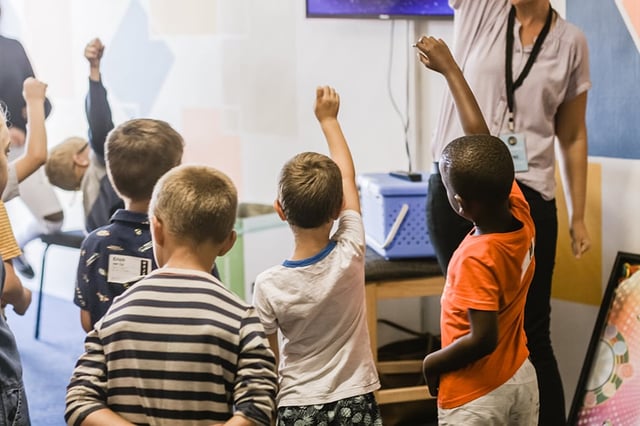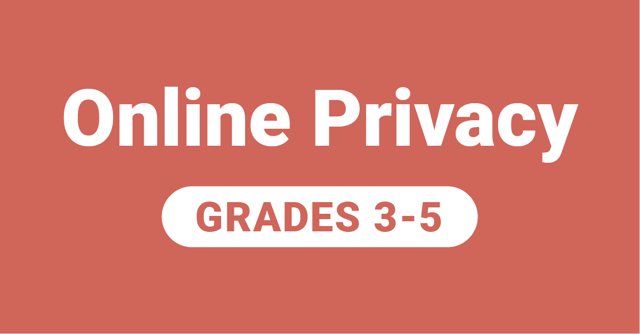One Expert Assesses the State of Media Literacy Education
 Insights By Frank Baker
Insights By Frank Baker
In an earlier article, we discussed the importance of media literacy in education; this article will focus on how media literacy is taking shape and offer considerations for program development.
As we shared, research has demonstrated a stark need for media literacy education, including one study, which found that a majority of middle school students could not decipher sponsored content from news or recognize how authors may have personal bias or vested interest in certain messaging.
So as technology continues to rewrite what literacy means for the 21st century, media literacy continues to escalate in importance and acts as an umbrella for many of the other new forms of literacy taking hold.
To better understand what media literacy is, why it’s important, and how it takes shape at schools, we spoke to Frank Baker, a TV Journalist turned district administrator turned researcher, writer, and professional development facilitator. He is a firm advocate for modernizing how we define literacy and has extensive and hands-on experience building media literacy programs at schools and districts.
Recognizing a Need for Media Literacy
The first question I asked Frank was about his journey from a television journalist to an educator. He was the media! His answer serves as a great primer for a larger discussion about our collective journey toward media literacy education.
“After leaving TV news, I joined the public-school system in Orlando where, among other things, I was in charge of purchasing the films and videos that all of the teachers there used.
One week I sat in a dozen or more classrooms to watch how these teachers used these media. I was quite surprised to find that none engaged students in any critical viewing skills, even though they had access to teacher guides which would have provided them with this information.
I knew that active viewing was important and discovered that it was part of something larger known as media literacy. I began working with school librarians to help them understand the importance of media literacy and how to help their teachers integrate it into instruction.” And so, the journey began…
As you will see, the work of integrating media literacy in learning is a journey of enhancing instruction over time, finding opportunities to educate and be educated, and pursue a subject that is critical to discourse and democracy.
The State of Media Literacy at the Federal and National Level
At the federal level, evidence of media literacy in the national Common Core standards, which have been widely adopted or modified, is minimal at best.
In an Education Week Commentary Frank co-authored, he shares how these standards fall short:
“And, other than a mention of the need to ‘evaluate information from multiple oral, visual, or multimodal sources,’ there is no specific reference in the common standards to critical analysis and production of film, television, advertising, radio, news, music, popular culture, video games, media remixes, and so on. Nor is there explicit attention on fostering critical analysis of media messages and representations.”
Moreover, Frank explains that media literacy in education “cannot possibly evolve until problems like its omission are resolved.”
At the same time, he does stipulate however that “other national organizations have spoken up and made it clear that media literacy needs to have a place in today’s instruction.”
To this point, Frank cites:
- The Partnership for 21st Century Skills
- The Horizon K-12 Report
- National Board of Professional Teaching Standards
- Future Work Skills 2020
- National Council of Teachers of English
- National Council for the Social Studies
The State of Media Literacy at the State Level
At the state level, advocacy groups have urged governments to adopt formalized media literacy education in schools; and currently 12 states have either passed or introduced legislation mandating media literacy education.
In response to this, Frank notes that while, “there is an effort to get media literacy legislation passed in every state in the US, the measures already passed vary in what they require.” When diving into the nuances of the laws, however, Frank points out that “Some don’t have much muscle,” adding he would “want to see these measures put money behind teacher training, materials, and assessments.”
To demonstrate what Baker means, here are some examples of these state laws:
- Utah requires Digital Citizenship education.
- Texas integrated media literacy in its state’s ELA standards
- South Carolina integrated media literacy into the Arts teaching standards (Full disclosure: Frank was on the writing team).
- California mandated the creation of website-hosted resources and professional development information for teachers.
- New Mexico advises middle and high schools offer a media literacy elective.
- Colorado created an advisory council for media literacy within the Department of Education.
The State of Media Literacy in Classrooms
Beyond state and national programs, the approach – and often choice – for integrating media literacy still falls to the schools and districts. When doing so, a report by the RAND corporation finds that there are two common methods for addressing media literacy in education: stand-alone or integrated.
In the stand-alone model, media literacy is a separate course. The benefit of this is that it assigns accountability.
On the other hand, educators may also opt to integrate media literacy into different classes. The benefits here are that it allows for more exposure, models different applications for media literacy in a variety of contexts, and minimizes the need for additional courses in already tight schedules.
As we consider what media literacy integration can look like, it’s important to consider this alongside other technology-driven initiatives. Writing for equip, I talk to a lot of educators about how technology is transforming the way students learn. One phrase I hear a lot is about moving students ‘from consumers to creators’ in the context of activating learning.
Frank explains that media literacy is a critical pre-requisite of this pursuit, adding that he worries “educators will engage students in MAKING media without first taking them through the process of analyzing media messages.”
Example 1: For example, in an ELA class studying PSAs, Frank advises that “teachers should show students other PSAs. They should take students through the common media literacy questions. They should analyze and deconstruct a PSA and how it differs from a commercial. They should study how PSAs are scripted. I like to remind educators: all forms of media involve writing. That’s a fact that I don’t find in today’s textbooks.”
Example 2: In an Arts class, before having students take pictures or share photography, students should have the opportunity to learn about its rules. “Even though today’s students have access to cameras and such, how many of those same students understand what rule of thirds is – or depth of field – or horizon line? … Most young people I meet don’t even know that their phone’s camera can be taken OFF automatic. They don’t know anything about ISO, shutter speed, aperture, or white balance.”
To instill these lessons, Frank suggests to educators: “why not have your students create the instruction manual for a media device. Not only do they have to write, they also have to support the instruction with images that they have to embed into their manual.”
The State of Media Literacy Among Adults
Beyond teaching media literacy to students, Frank also focuses on educating the educators because it is vital they hone this skill set as well. In fact, roughly 60 percent of American adults will not read past a headline before sharing an article on social media, and only 26 percent of adults were able to correctly discern between factual and fictitious statements in a study conducted by Pew.
For Educators
Frank explains: “In my work, I always make a connection to the standards educators are expected to follow. So when ELA makes a reference to non-print or informational texts, I can bring in an ad or film clip and show them how to use media literacy skills to approach it."
"In Social Studies, studying primary sources includes photographs, so there is an opening to teaching visual literacy."
"In Health, we can help students understand the marketing techniques used to make smoking or vaping attractive.”
Throughout his professional development workshops his “goal is to pull back the curtain so that educators see in a whole new light. This is not rocket science. It is simple and engaging.” His workshops tend to follow the following format:
Photography and Images: “Each workshop starts with visual literacy. We will examine images, some historical and some contemporary. With the photos there are no captions, so there is no context. Readers are forced to look closely at the image and make inferences only with what they see.”
Texts and Close Reading Skills: “Next, I will introduce advertising and instruct educators on how to conduct a close read. I use both print and non-print ads because most of us are exposed to many commercials. Examples here include toy ads, credit card ads, cell phone ads, and ads from politicians. Each of these use specific techniques to make the message attractive and believable.”
Film: “Lastly, I will introduce the moving images and instruct teachers on how to read a film, using the languages of film. Once again, I will use contemporary and classic examples that educators can relate to. I usually start with the question: ‘what is your favorite movie?’ and ‘what scene in that movie makes it memorable?’”
For Parents
This important work, however, does not stop with educators. Parents must also have the opportunities to learn about media literacy so they can model to their kids how to critically interpret what they read, hear, and see.
To this end, Frank suggests “that each PTO/PTA invite a media educator to come and explain how what students learn at school can also be applied at home. For example, if a teacher were to take students through a deconstruction of a toy commercial at school, he or she could send home my commercial analysis worksheet and invite parents to choose a commercial (on TV or online) and do the activity together.”
“Seeing the Media in a Whole New Light”
To end, I want to share an anecdote from Frank:
“One morning, after presenting a media literacy workshop to some high school students, the bell rang, and they were gathering their books to depart. I overhead one young lady say to another ‘I’ll never look at a commercial the same way again.’ I thought YES: that’s the goal—to help students see media in a whole new light.”
With media literacy, students become independent thinkers, informed citizens, and introspective researchers, writers, designers, and problem solvers.






